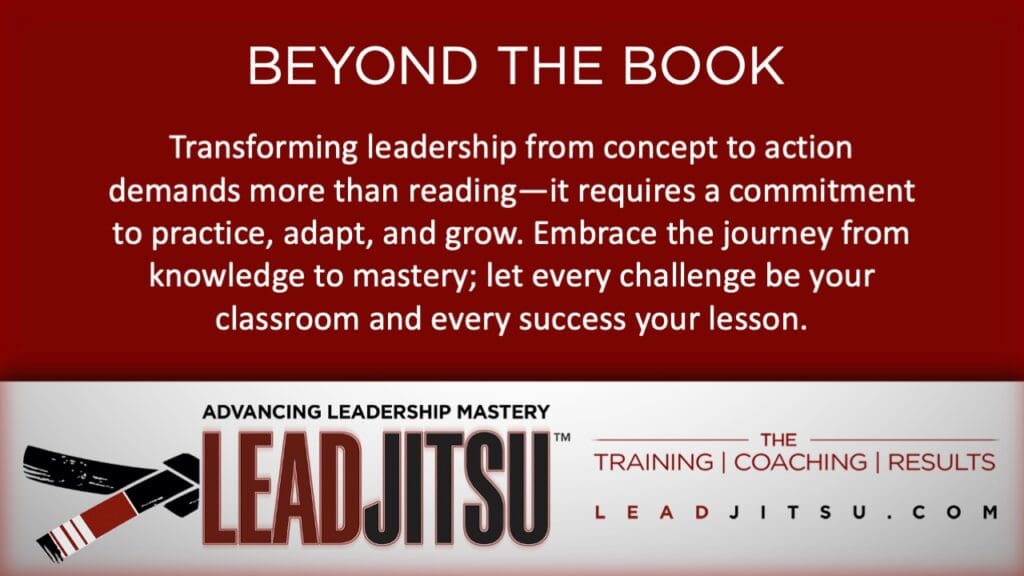In an age where leadership advice is as accessible as the nearest bookshelf or digital device, leaders find themselves inundated with theories, strategies, and case studies promising to unlock the secrets of effective leadership. Yet, the journey from absorbing the written word to applying and integrating life-changing skills in the real world is where many falter. The gap between knowledge and action remains a chasm that few successfully bridge. So, how can leaders move beyond the allure of books to truly embody the principles of superb leadership?
Embrace Active Learning
The first step in transcending the passive intake of information is to embrace active learning. This means engaging with the material in a way that prompts reflection, questioning, and application. Instead of merely reading a book from cover to cover, leaders should challenge themselves to identify at least one actionable insight per chapter and create a plan to implement it in their daily leadership practice.
Seek Accountability
Accountability is the catalyst that transforms intention into action. Leaders should seek out or create accountability structures, whether through a trusted mentor, a peer group, or a professional coach. Sharing your goals and progress with someone else increases your commitment and the likelihood of following through. Additionally, regular check-ins provide opportunities for reflection and course correction, ensuring that new skills are not only attempted but honed and integrated.

Tailor Strategies to Your Context
One size does not fit all in leadership development. The wisdom gleaned from books must be adapted to fit the leader’s specific context, including their team’s unique dynamics, organizational culture, and the challenges at hand. Leaders should take the concepts learned and ask, “How does this apply to my situation?” Customizing strategies not only makes them more relevant but also increases the leader’s engagement and investment in the outcome.
Practice, Practice, Practice
Skills become integrated into our leadership style through practice and repetition. Leaders must create opportunities to practice new skills in a variety of contexts, reflecting on what works and what doesn’t, and adjusting their approach accordingly. This iterative process is essential for moving from understanding a concept intellectually to embodying it in one’s actions and decisions.
Foster a Growth Mindset
Embracing a growth mindset, the belief that abilities and intelligence can be developed through dedication and hard work, is fundamental. This perspective encourages leaders to view challenges as opportunities to grow and to see failures as part of the learning process. It shifts the focus from proving competence to developing competence, creating a more resilient and adaptable leader.
Engage in Reflective Practice
Reflection is a powerful tool for integrating learning into practice. It involves looking back on experiences, analyzing them, and drawing lessons. Leaders should schedule regular reflection times to consider what leadership principles they have applied, the outcomes of those actions, and what they have learned. This reflective practice solidifies the connection between theory and practice and deepens the leader’s understanding and mastery of new skills.
Invest in Coaching
Leadership coaching provides personalized support and guidance in the application of leadership skills. A coach can help a leader navigate the complexities of applying new strategies, offer feedback and perspective, and hold the leader accountable to their growth goals. Coaching is a partnership that accelerates the leader’s development and supports the integration of new skills into their leadership repertoire.
In Summary
Moving beyond the lure of leadership books to the true application and integration of life-changing skills requires intention, effort, and support. By embracing active learning, seeking accountability, tailoring strategies to their context, practicing relentlessly, fostering a growth mindset, engaging in reflective practice, and investing in coaching, leaders can bridge the gap between knowledge and action. This journey transforms theoretical knowledge into the artistry and discipline of superb leadership, enabling leaders to not only aspire to greatness but to achieve it.
Give us 15 minutes to demonstrate how coaching can change your career and give you greater fulfillment.
Schedule a 15-minute call to learn more!
– – – – –
LEADJITSU – The vision, artistry, and discipline of superb leadership.
The Training | The Coaching | The Culture | The Results
For Leaders and For Teams
